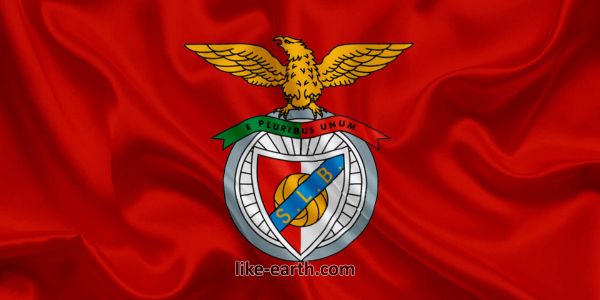The Most Iconic Extinct Royal Families
The Most Iconic Extinct Royal Families – Extinct royal families that once ruled nations have left a deep mark in global history, culture, and politics. Their rise and fall not only altered monarchies but also shaped modern governance in profound ways.
The Nature of Royal Extinction
Monarchies do not last forever. Over the centuries, several royal families were either overthrown, dissolved, or merged through political alliances and wars. Some lost favor due to internal conflict or public dissatisfaction, while others fell due to invasions or revolutions.
The Romanovs – Russia’s Last Imperial Family
No list of extinct monarchies is complete without the Romanov dynasty. They ruled Russia for over 300 years until the Bolshevik Revolution of 1917. Tsar Nicholas II, the last emperor, and his family were tragically executed in 1918. Their demise marked the end of the Russian Empire and the rise of Soviet rule. The Romanovs remain a symbol of tragic royal downfall.
The French Bourbons – From Absolutism to Revolution
The House of Bourbon is a prime example of how a monarchy can collapse under the weight of social unrest. Louis XVI was executed in 1793 during the French Revolution. Although the Bourbons were briefly restored in the 19th century, the French monarchy never regained its absolute power.
The Qing Dynasty – China’s Final Imperial Reign
The Qing Dynasty, founded in 1644 by the Manchus, ruled China until 1912. Emperor Puyi was China’s last monarch. His forced abdication marked the end of over two millennia of imperial rule in China. The Qing legacy still influences Chinese culture today, but the royal line was effectively ended with the formation of the Republic of China.
The German Kaisers – The End After World War I
Germany’s monarchy ended with Kaiser Wilhelm II, who abdicated in 1918 after Germany’s defeat in World War I. The German Empire’s royal system was dismantled in favor of a democratic republic. Although descendants still exist, they hold no political power or formal recognition.
The Austro-Hungarian Habsburgs
The Habsburg dynasty once controlled a significant portion of Europe. Their monarchy came to a halt after World War I, when Austria-Hungary was dismantled. Charles I was the last Emperor. Although he attempted to regain the throne, all efforts failed. Today, the Habsburg family exists only as historical figures without influence.
The Ottoman Empire – A Caliphate’s Collapse
The Ottoman dynasty ruled for over 600 years, spanning three continents. It ended in 1922 when Mustafa Kemal Atatürk abolished the sultanate, forming modern-day Turkey. The Ottoman royal family went into exile, and their once-mighty empire became history. Despite efforts to revive cultural identity, the dynasty remains extinct politically.
Kingdom of Hawaii – An Overthrown Monarchy
Queen Liliʻuokalani was the last sovereign of the Hawaiian Kingdom. In 1893, she was overthrown by American and local interests, leading to Hawaii’s annexation by the United States. The royal line ended, but the queen remains a beloved historical figure. Efforts to revive cultural pride persist today.
Kingdom of Bavaria – Fading into Modern Germany
The Bavarian monarchy, ruled by the Wittelsbach family, ended in 1918. Like other German royal houses, it dissolved after World War I. Although the family still holds titles, they play no role in modern politics. Their castles and palaces now serve as tourist attractions and cultural sites.
Factors Leading to Royal Family Extinction
- Revolutions: Public uprising against monarchies (e.g., France, Russia).
- War: World conflicts reshaping national boundaries (e.g., Germany, Austria-Hungary).
- Colonialism: Monarchies overtaken by foreign rule (e.g., Hawaii).
- Political Reform: Democratic shifts making monarchies obsolete (e.g., China).
Why We Still Care About Extinct Monarchies
Despite their dissolution, extinct royal families fascinate historians, tourists, and pop culture enthusiasts. Many former royals have become celebrities in their own right or continue philanthropic work. Their stories often symbolize the transition from autocracy to democracy.
The Legacy They Leave Behind
These families left behind palaces, art, traditions, and even modern political philosophies. Tourists flock to royal landmarks, while books and films explore their dramatic histories. The extinction of a monarchy doesn’t erase its influence—it transforms it.
Extinct but Never Forgotten
From palatial estates in Europe to royal archives in Asia, the remnants of these monarchies still capture the public’s imagination. Their extinction reminds us that no institution is eternal, but the culture they shaped can last for generations.
The Most Iconic Extinct Royal Families : The Changing Face of Monarchy
The phrase “extinct royal families that once ruled nations” captures the complex journey of power, tradition, and change. As history evolves, the echoes of these dynasties continue to resonate, teaching us about resilience, politics, and the human condition.
Explore more engaging historical topics at Like Earth. The Most Iconic Extinct Royal Families
Stay updated with cultural and global stories via our WhatsApp Channel.



